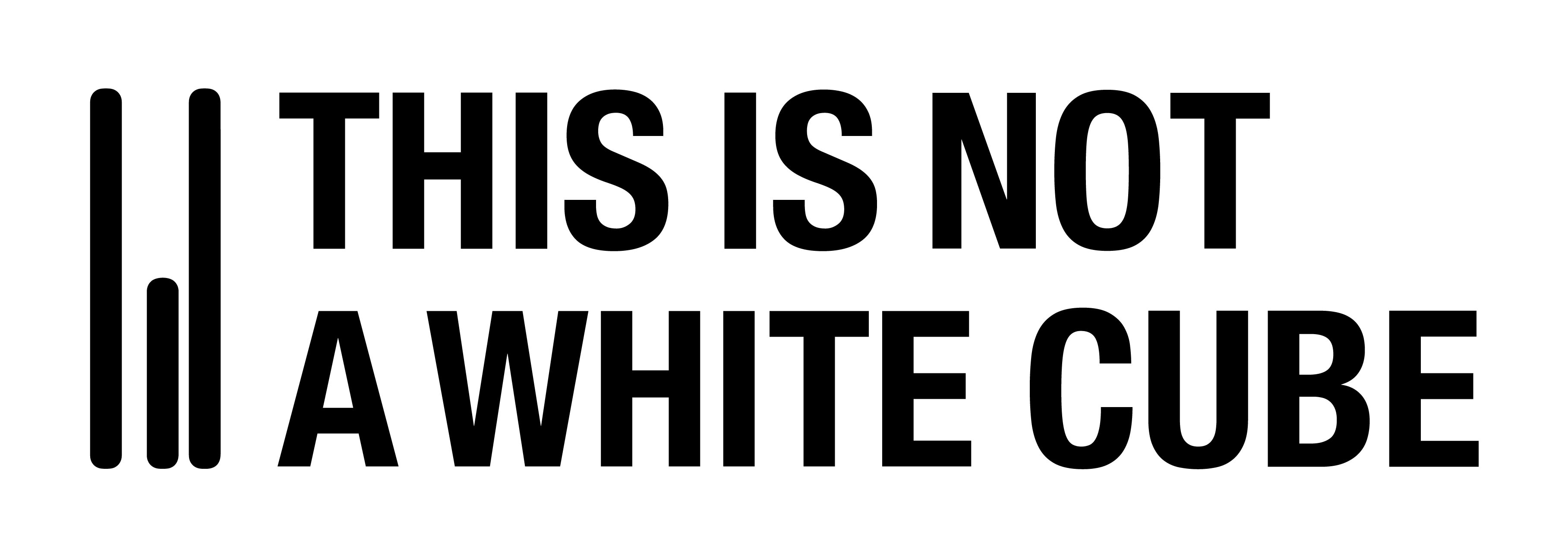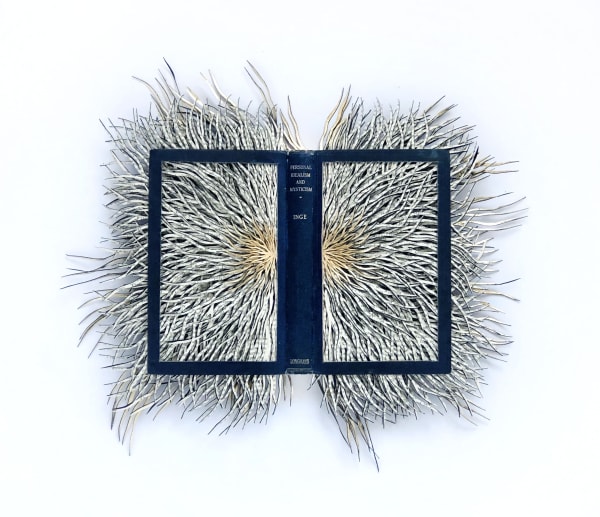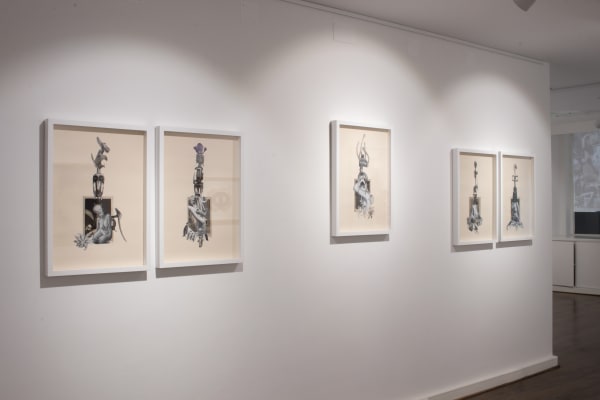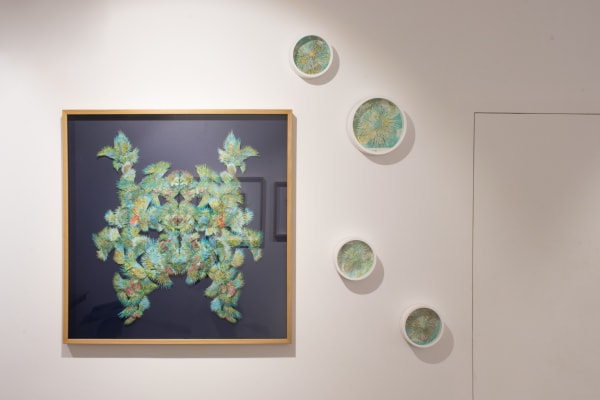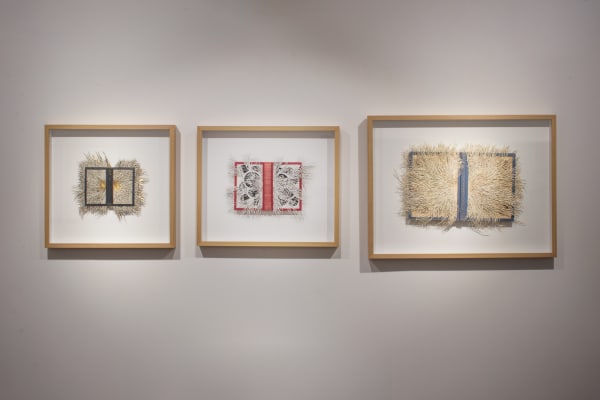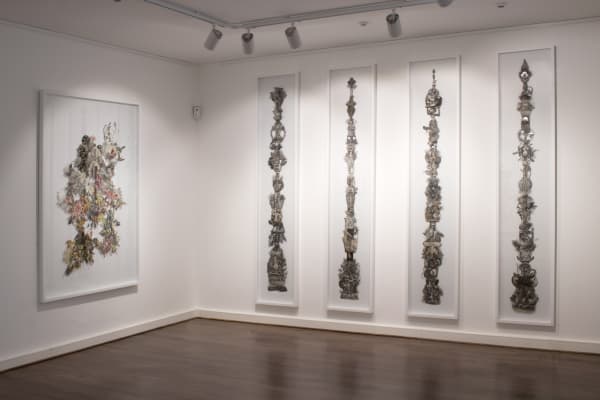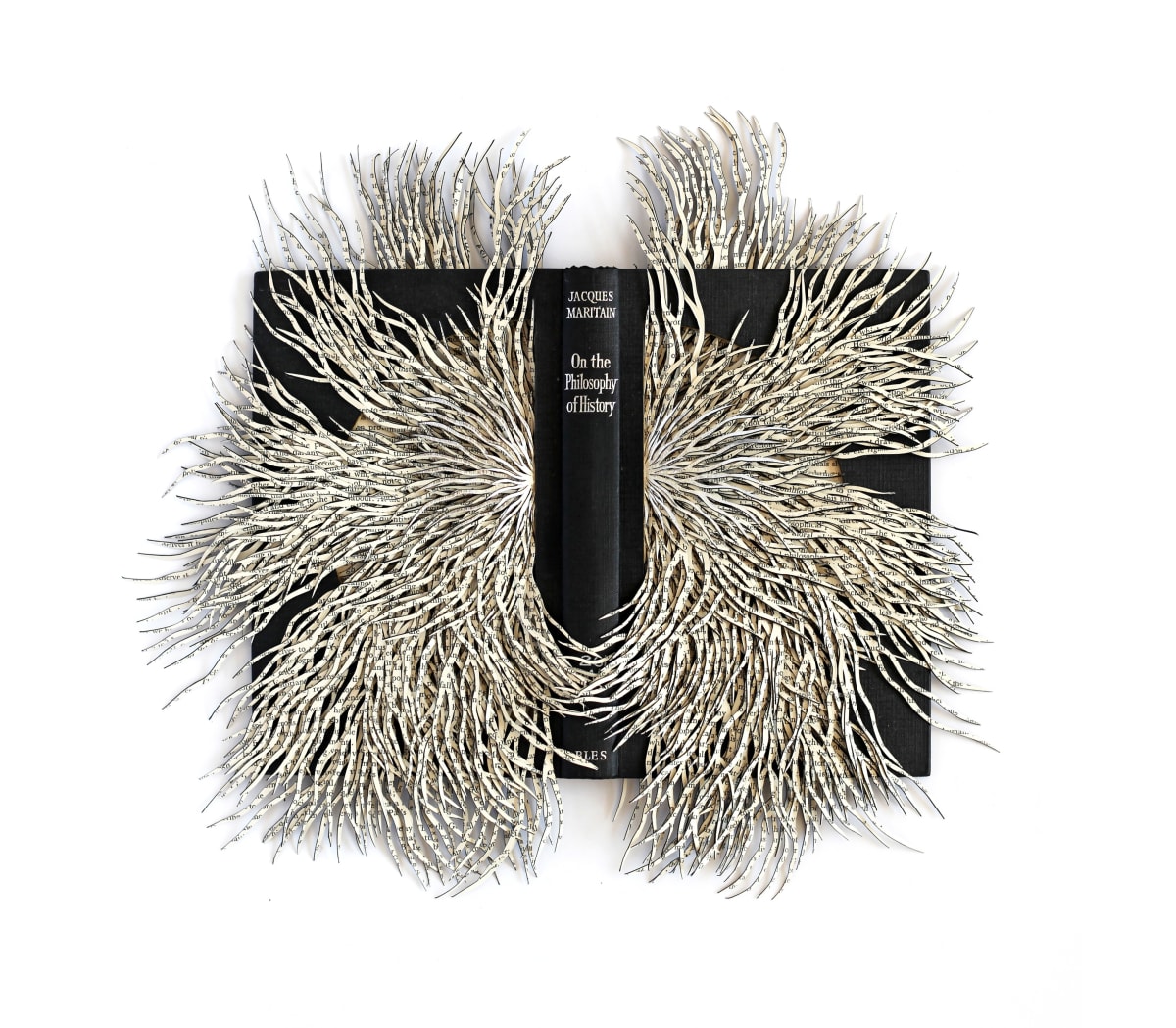LOOT: Solo Show: Barbara Wildenboer
"LOOT" is the first solo exhibition by the South African artist Barbara Wildenboer in Portugal. The show presents about 30 unpublished works, divided into three distinct nuclei. Among these is the artist's most recent body of work, which gives the exhibition its name.
"LOOT - Spoils of war" stems from the artist's growing interest in understanding how a distinctive model of significance was generated and shaped from the historical and civilizational encounter between Africa and Europe.
These ideas are materialized through the exploration of the concept of 'appropriation.' In this exhibition, the use of “appropriation” is, on the one hand, a direct reference to the artifacts looted and expropriated from their origins in the context of colonization. Yet, on the other hand, it also translates the plastic consistency of the artist’s work, which has long involved the reconfiguration and integration of texts, books, maps, and pre-existing images into collages and three-dimensional installations. In appropriation "per se," the artist finds a truly essential working tool for constructing an artistic medium.
Transversally, Barbara Wildeboer uses in her creative process a combination of analog and digital processes that contribute to the construction of a diverse and rich body of work, primarily consisting of collages, photographic constructions, paper installations, digitally animated photographic sculptures, and book arts.
Based on this model and the concept of appropriation, over the last two years, the artist has collected images of numerous ancient artifacts of distinct origins - from Africa, Oceania, Ancient Greece, Mesopotamia, and the Americas - currently part of the collections of museums in the western world, in Great Britain, Germany, France, and the USA.
Removed from their original context and assembled in complex visual systems, with a surreal character, these images undergo an authorial process of re-signification, taking on a renewed nature in this exhibition. At its genesis is an iconographic (re) reading that frames the historical weight of intercultural contacts.
Throughout the exhibition, we witness a ritual of iconographic re-signification, decoding, and re-coding of the image, contributing to the construction of a critical view of historiography and the processes of appropriation and "fetishization" of cultures.
At the epicenter of the show and of the debate that the artist thus seeks to promote, we find a set of monochromatic sculptural installations that in their configuration resemble "ladders, poles, trees, towers." These totems or small obelisks consist "of an assimilation of different relics, fertility figures, masks, vases, and various architectural elements.”
These paper artifacts are shrewdly and ingeniously grouped in an envisioned accommodation that evokes, in an idiosyncratic and absurd way, the systematization of the Western Museum to highlight the multiple ways in which these objects can be perceived.
“The collaged paper sculptures echo how exhibitions of archaeological artifacts are curated, the artifacts being placed on pedestals or in vitrines, and then illuminated to produce the idea of the aura of an artwork that is far removed from its original functions. The result is some kind of documentary fiction or fictional documentary that references real things but transforms them into something else.”
The concepts of originality and authorship are central elements in this exhibition by Barbara Wildenboer. In a declared challenge to the conventions of the art world, her action has been producing significant contributions to the inversion of thought in an era marked by the need to impose a decolonial ideology.
-

An African Survey, hand-cut altered book, 45x35cm, 2021
-

Caryatid I, hand-cut analogue collage on fabriano, 70x50cm, 2022
-

Prehistory, Hand-cut altered book, 45x35cm, 2021
-

Spoils of War III, Paper construction, 220x38x6cm, 2021
-

Hand-cut altered book, 50x60cm, 2022
-

Dawn of the Gods, hand-cut altered book, 45x35cm, 2021
-

Personal Idealism and Mysticism, hand-cut altered book, 48x58cm, 2022
